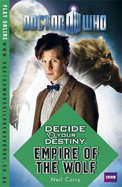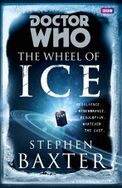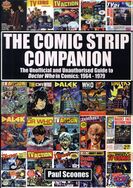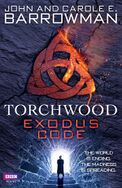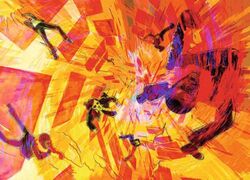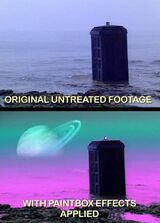Doctor Who Wiki: Difference between revisions
m (typo) |
(adding comic con logo at wikis staff request; good publicity for us, too.) |
||
| Line 20: | Line 20: | ||
{| style="width:100%; background-color:transparent"<!--background-color:#FFE600;--> | {| style="width:100%; background-color:transparent"<!--background-color:#FFE600;--> | ||
|- align="center" | |- align="center" | ||
|{{/Top}} {{/Television}} | |{{w:CC2012-live}} {{/Top}} {{/Television}} | ||
|} | |} | ||
{| style="width:100%; background-color:transparent" | {| style="width:100%; background-color:transparent" | ||
Revision as of 16:16, 6 July 2012
| {{w:CC2012-live}} This wiki contains spoilers. Read at your own risk. We were founded on 11 November 2004 and are currently working on 114,340 articles.
|
Listen to the Doctor and friends!
Big Finish's main range of Doctor Who audio stories features the adventures of mainly the Fifth, Sixth and Seventh Doctors, complete with large casts, sound effects and scores. Though some original-to-audio companions are occasionally used, the line typically features the original lead actors seen on television. Latest booksStripped for Action!
Lytton was a four-part comic mini-series independently published by Cutaway Comics. The storyline focused upon the eponymous mercenary Gustave Lytton, originating from Doctor Who's Resurrection of the Daleks, following him and his batman Charlie Wilson protecting the Jazz Soiree Club in Soho to travelling to a parallel Earth... | ||||||
Article of the minuteThe Quantel Paintbox, more usually just called "Paintbox", was an early computer graphics workstation that revolutionised the way television graphics were produced in the 1980s. Like many other visual effects seen on early Doctor Who — such as colour separation overlay, Paintbox primarily had applications in sports and news programming, but was used more creatively by the visual effects designers of Doctor Who. Although Paintbox was primarily just for adding textual elements to pictures, the Doctor Who crew ambitiously used it for colour grading and for the insertion of simple graphical elements. Though its first use was in the Fourth Doctor story, The Leisure Hive, it was perhaps more noticeably used during the Sixth and Seventh Doctor's eras, particularly to give a more "alien ambience" to certain shots. Perhaps its most obvious applications were in the stories Mindwarp (pictured), Time and the Rani and Survival. Read more... ✍Don't like this article? Reload the page for another one! Quote of the minute
<chat /> |
Popular categoriesIf you're new to wikis, it might be helpful for you to take note of the concept of categories. Categories are the principal organizing tool on a wiki, allowing users to group information in ways that can ease the discovery of information. All the pages on our wiki are found, ultimately, in just four big "super categories". If this is your first visit here, please go to Floor 500 for a discussion of the way our wiki is organized. ✍
| ||||||||||||||||||||||||||||||||||||||||||||||||
The latest forum discussions
| ||||||||||||||||||||||||||||||||||||||||||||||||
Fast FactsDo you know your assistant directors? Sure, you might be able to rattle off directors — but how's your knowledge of the people who are really on the front lines of Doctor Who production. Read more about the working class stiffs who go by the enigmatic titles of 1st AD, 2nd AD and 3rd AD.
Other Doctor Who wikis
In other languages
If you are a fluent writer in one of these languages, we encourage you to join one of these wikis. If it's inactive, we urge you to formally adopt it. Just fill out the Special:Contact form on that wiki and request administrator status. | ||||||||||||||||||||||||||||||||||||||||||||||||






